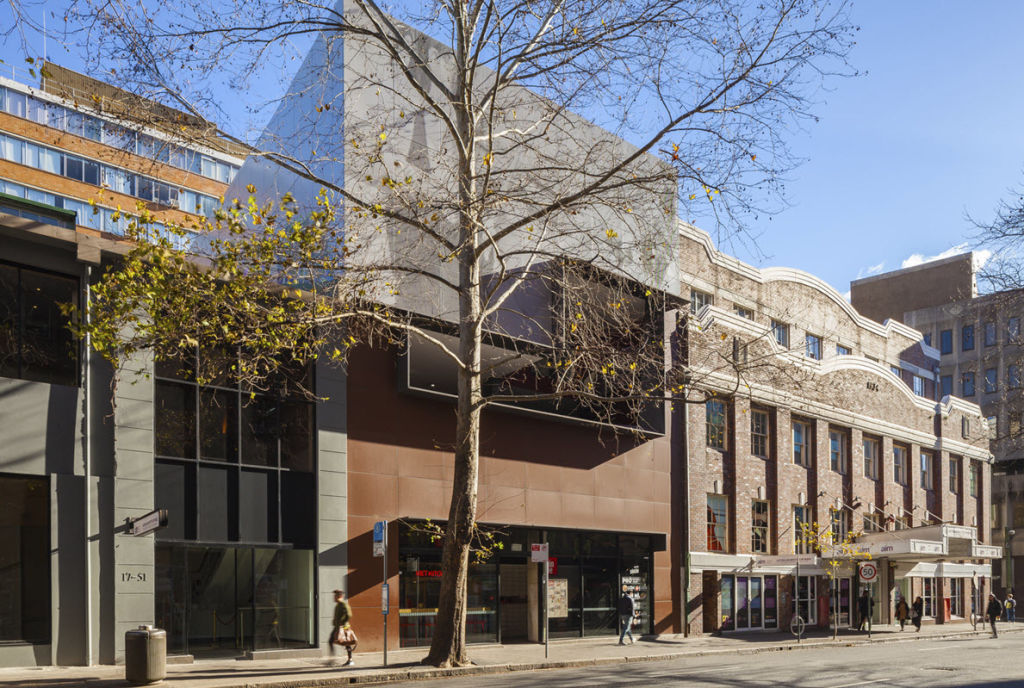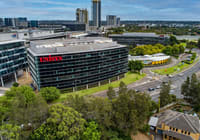
Redevelopment of Australian Institute of Music's headquarters in Surry Hills has everyone singing from same song sheet
In what’s music to everyone’s ears, the Australian Institute of Music’s Sydney campus has just undergone a $6 million redevelopment to consolidate its assortment of buildings into a campus that feels much more of a single opus.
It’s something that’s revitalised the institute. “It’s brought up our facilities to be state of the art, with three different-sized auditoria, good learning spaces, a great recital space and impromptu performance area,” said the institute’s chief executive Margaret Noble.
“It’s brought some really nice circulation and social spaces for the students as well, and we’ve taken the opportunity to upgrade our technology so you can record from any level of the buildings to our recording studio on the ground floor. I think it’s now making people much more aware of the institute, the quality of our services and the venues available for external hire.”
The architects who undertook the project were Fender Katsalidis, who’ve worked with the institute, on and off, for about 25 years. With buildings scattered throughout Sydney, it was determined the organisation would be much better off if it could concentrate all its operations in one site.
As a result, its Foveaux Street, Surry Hills, location was anointed the major HQ, and a huge renovation project was undertaken – the early 1900s warehouse, a 1930s five-level brick heritage structure on the corner and a similar five-storey infill building, added in 2015, between.
The result has been to create one campus for all the students of every discipline taught – including classical and contemporary music, audio production, composition, arts and entertainment management, and music theatre.
“The aim was to bring all the buildings into one place to try to create a single campus and a new heart for the school and give it a bit of soul,” said Fender Katsalidis director Rob Mirams.
“It’s a much better solution for the institute and has created a fantastic dynamic because now it’s much easier to have a cross-pollination of all the different disciplines. There’s now one common floor for the students with a cafe, the library, dance studio, auditorium and ad hoc performance space. That’s become the core and the heart of the place now.”
The inspiring redesign has seen multi-use areas formed, such as performance places that transform into classrooms, auditoria doubling as performance and lecture theatres and student breakout areas that can become impromptu performance spaces.
The warehouse building, formerly a garment manufacturing business, had been used by the institute for some years, but was cluttered with partitions and had never had its full potential explored.
For this project, the ceilings were torn down to reveal handsome clerestory windows that no one had known were there, painted timber trusses were sandblasted back down to the original wood, ironbark columns were restored and timber acoustic panels were placed to deflect sound. The end result has seen the heritage features highlighted by contemporary design in a series of light, bright, lofty spaces.
AIM has been operating in Sydney now for more than 50 years, since it was first founded as the Sydney Guitar School in 1968. It also set up a Melbourne campus more recently, with an old wool auction house on King Street becoming an auditorium, and the pair offer a range of fully accredited music and creative arts programs to both domestic and international students.
Now with about 800 students enrolled in Sydney and another 300 in Melbourne, former graduates include singer Casey Donovan, who won the second season of Australian Idol, tenor Mark Vincent who won Australia’s Got Talent in 2009, Bardot girl band member Tiffani Wood, rock, metal and fusion guitarist Chris Brooks, Emmy-nominated composer Bianca Moon and pop singer Palmy.
International recording star rapper Daniel “D Minor” Harvey is a current student, studying his bachelor of composition and production, with his single Concrete Pillow, about his journey from homelessness, reaching more than 11 million views worldwide. He won gold for Australia at the annual World Championships of Performing Arts.
Fender Katsalidis principal Joshua Farkash, who has friends who are also graduates of the institute and whose own daughter is a composer, says they worked closely with staff and students to establish a brief that would work for everyone.
“With the warehouse, there were a lot of partitions and ceilings that prevented you from appreciating the original architecture of the structure and, once they were stripped away, you could enjoy the volumes and space,” he said.
“It took a lot of investigative work, but it was very exciting to rediscover how it should look. Now with one entrance point, it can also be opened to the public for events, concerts or shows with so many more possibilities. The staff and students all say they love it.”










